#plants and herbs
Explore tagged Tumblr posts
Note
This also pisses me the hell off because people like that do so much harm to plant based medicinal sciences.
Thing is that while you may not be able to dose herbs properly at home, at a lab it would be possible, though requiring additional tests. Properly assembled plant based medication can be safer, because it has way less side efects and doesn't harm your other organs and systems while aiding only one of them, unlike what perscription drugs can do. For example my stomach got so damaged after years of taking psychiatric medication, I cannot take aspirin, ibuprofen and practically any painkiller is a risk. Feel free to correct me if I am off base here, but there definitely is a place in the medical world for plant based treatment, it's just that the amount of quakers and 'spiritual' frauds is making the entire science look like a scam, while in reality it IS absolutely true that the world could benefit from turning to natural sources more often.
There is just a need for more regulation surrounding these practices.
Also, idk if it works like that in USA, but in Poland supplements of any kind, herbal or chemical, are not held to the same standards as meds and they can contain next to anything. In Poland, the trick is to never buy supplements even in pharmacies, but instead ask specifically for 'medication without perscription'. I've actually had an allergic reaction to [medically necessary] vitamins before; I thought since I bought them at a pharmacy they have to be safe, but I didn't specify I want medication and not a supplement.
One thing I never appreciate on tumblr is the black and white approach to every issue that is touched on here. Things are never as simple and there is always a lot more nuance than posts like this make it seem. Not criticising OP, just pointing it out.
Anyway, in my country there are university majors you can get in technology of medicinal plants. I don't know how it looks exactly, but I do know it's considered a scientific field of study and you need high grades in chemistry and biology to get in. It doesn't last as long as a pharmaceutical degree [phrm is 5 years and this one is 3,5 years], but you can get go for an additional 1,5 year. I don't know how the two compare and ideally one should probably go to both, however my lifetime is limited and I will gladly give the technology of medicinal plants a shot.
With all this being said, I do not believe herbalism should be practiced by people getting a licence online, I believe this is a genuine scientific field that should be treated as such and people making or selling plant based products should absolutely have higher education qualifiying them to do so.
If I have made any substansive errors, feel free to correct me.
When you say you're anti-CAM what does that mean? Like what does CAM mean in that context? I genuinely haven't seen that acronym before and I'm assuming you aren't anti-camming as in like the form of sex work
Complimentary and Alternative Medicine.
I am capable of turning off my inner annoying atheist, I am incapable of turning off my inner annoying quackwatcher.
I have had real life fights with people I genuinely love about this and I do not regret it. I will absolutely not regret shitting all over someone's $500 herbalist certification.
24K notes
·
View notes
Text
Herb's Properties
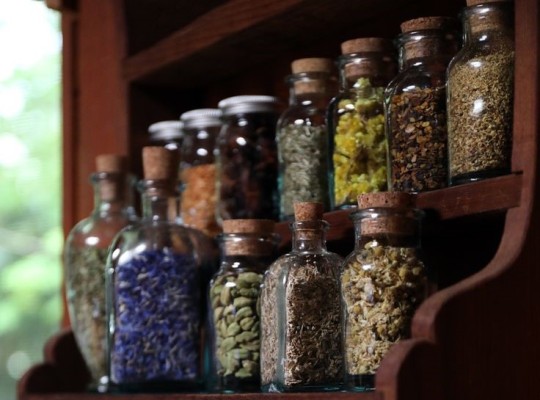

Basil: money, luck, prosperity, happiness
Bay Leaf: energy, cleansing, can be charged with almost any intention
Camomile: Caring, kindness, luck, growth, self-love growth, confidence, avoiding negativity, happiness
Cinnamon: passion, quick success, fire magick
Chia seeds: Growth, health, kindness, Property
Chilli flakes: Pride, confidence, power, strength, Passion
Cumin: Courage, bravery, protection, loyalty
Dandelion: wishes, charisma, success, good luck
Dill: sexual love, luck, protection
Eucalyptus: cleansing, healing, purifying, relaxing, comfort
Fennel: hate, anger
Flax seeds: Prosperity, growth, new beginnings
Ginger: fiery passion, success, and personal power
Jasmine: love, dreams, sensuality, luxury and kindness
Lavender: love and attraction, purification, relaxation, restful sleep
Nutmeg: luck, Health, Fidelity, Love, Prosperity, comfort, loyalty
Oregano: comfort, love, warmth
Paprika: Pride, confidence, power, strength
Parsley: Cleansing. purification
Peppermint: healing, purification, love and energy, cleansing, prosperity
Poppy seeds: protection, intuition, self-assurance, hexing and cursing
Rose: love, beauty, harmony, romance, attraction
Rosemary: cleansing, purification, wisdom, protection
Sesame seeds: Prosperity, growth, health, nurturing
Spearmint: love, cleansing, renewal, blessing
Sunflower seeds: happiness, growth, joy
Thyme: beauty, strength, courage
Turmeric: confidence, creativity, energy
Vanilla: love and sexuality
tip jar
#thecupidwitch#witchcraft#witch community#witches#witchcore#witch#witchblr#green witch#grimoire#herbs#book of shadows#wicca#pegan#peganism#wiccablr#pagan wicca#wiccan#magic#ko fi support#baby witch#beginner witch#chaos witch#eclectic witch#folk witchcraft#hedge witch#kitchen witch#tarot witch#traditional witchcraft#witch aesthetic#plants and herbs
19K notes
·
View notes
Text
Herb Correspondences - S-Z
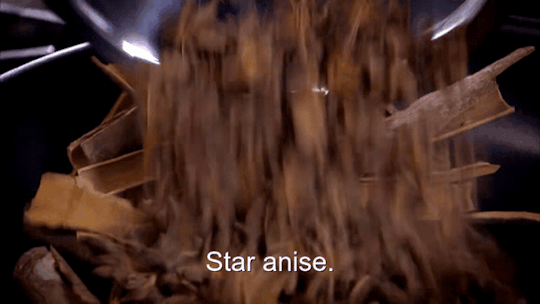
Sage - Used for self-purification and cleansing. Helps grief and loss. Healing and protection also increase wisdom. Element Air.
Sandalwood - Burn during protection, healing, and exorcism spells. Aids luck and success, meditation and divination. Raises a high spiritual vibration. Element Water.
Skullcap - Aids in love, fidelity and peace. Increases harmony. Element Water.
Sea Salt - Use to cleanse crystals and tools. For purification, grounding and protection. Supports ritual work. Absorbs negativity and banishes evil. Element Earth & Water.
Sheep's Purse - Prosperity, protection and healing. Element Earth.
Sheep Sorrel - Carry to protect against heart disease. Cleansing and increases luck. Use in faery magic. Element Earth.
St. John's Wort - Worn to prevent colds & fevers. Induces prophetic and romantic dreams. Protects against hexes and black witchcraft. Increases happiness. Use in Solar Magic. Element Fire.
Star Anise - Consecration, purification, and happiness. Use for curse breaking or increasing luck. Burn to increase psychic awareness. Element Fire.
Strawberry Leaf - Attracts success, good fortune, and favorable circumstances. Increases love and aids pregnancy. Element Water.
Sunflower - Energy, protection, and power. Aids wisdom and brings about wishes. Use in fertility magic. Element Fire.
Sweet Cicely - Use during rituals for the dead or dying. It helps with divination and the contact of the spirit. It is sacred to the Goddess’ of death. Element Earth.
Sweetwood - See Cinnamon.
Tansy - See Agrimony.
Tarragon - Increases self-confidence. Use in Dragon magic. Aids healing after abusive situations. Element Fire.
Tea Leaves - Use for courage or strength. In tea for increasing lust. Burn leaves to ensure future riches. Element Air.
Thistle - See Blessed Thistle.
Thyme - Attracts loyalty, affection, and love. Increases good luck and psychic power. Drink tea to aid sleep. Element Air.
Valerian - Also called Graveyard dust. Aids sleep is calming and is a sedative. Quietens emotions. Supports protection and love. Element Water.
Vervain - Strengthen other herbs. Helps, peace, love and happiness. Burn the leaves to attract wealth and keep your youth. Increases chastity also. Element Water.
Verbena - Psychic protection, peace and purification. Healing and helps depression. Increases beauty and love. Mind opening and clearing. Ideal use for exams. Element Earth.
Violet - See Heart’s Ease.
White Willow Bark - Use in lunar magic. Reduces negativity and removes evil forces and hexes. Used for healing spells. Element Water.
Willow - Used for lunar magic, drawing or strengthening love, healing, and overcoming sadness. Element Water.
Witches Grass - Happiness, lust, love, and exorcism. Reverses hexes. Element Earth.
Wood Betony - Use for purification, protection, and the expulsion of evil spirits and nightmares. Draws love in your direction. Element Fire.
Woodruff - Victory, protection, and money. Element Air.
Wormwood - Used to remove anger, stop war, inhibit violent acts, and for protection. Use in clairvoyance, to summon spirits, or to enhance divinatory abilities. Element Earth.
Yarrow - Healing, calming and increases love. Used in handfasting & weddings. Increases psychic power and divination. Gives courage when needed. Element Air.
#witch#witchcraft#witchblr#pagan#witches#wicca#pagan witch#paganism#pagan wicca#herbsforspells#herbs#plants and herbs#herbalism#spell work#witch community#spellcraft#witch tips#beginner witch#grimoire
1K notes
·
View notes
Text

#cross stitch#oregano#marjoram#herbs#plants and herbs#plants#botanical#cottage#cottage aesthetic#cottagecore#country#countryside#cozy#cozy aesthetic#cozycore#crafts#summer
264 notes
·
View notes
Text
Herbs to help you regulate cortisol and stress 🌿🍵🧚
🍃 Chamomile when you have an anxious stomach
🍃 Valerian when your thoughts don’t let you sleep
🍃 Skullcap when you feel muscle tension from stress
🍃 Holy basil when you’ve been high stress for days
🍃 Rhodiola when you feel burnt out from stress
🍃 Gotu kola when stress is causing you brain fog
🍃 Passion flower when you feel irritable and snappy
#herbs#plants and herbs#natural medicine#meditation#womens health#healthy lifestyle#health tips#health and wellness#healthylifestyle#cortisol#manage stress#hormones#hormonal balance#hormonal imbalance#healingjourney#healing#law of the universe#medicinal herbs#chinese herbs#natural herbs#herbsforhealth
512 notes
·
View notes
Text
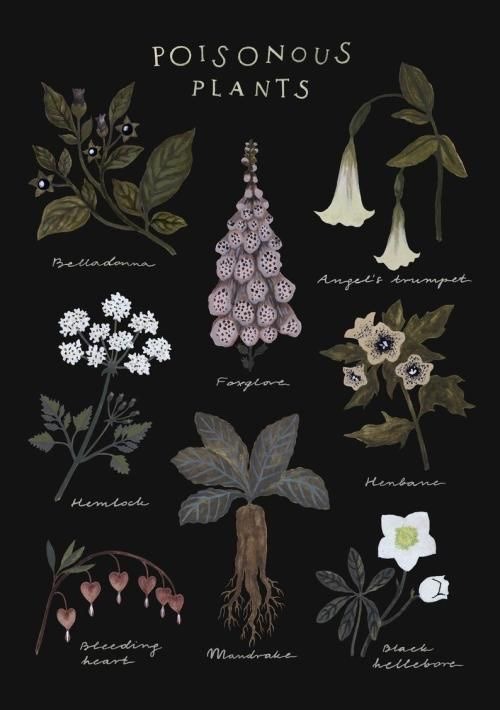
713 notes
·
View notes
Text
It's Time for Samhain! (Oct 31- Nov 1)

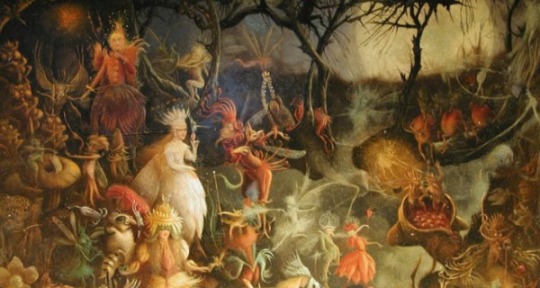
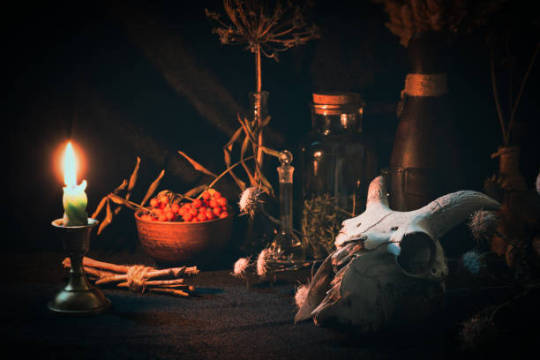
What is Samhain? In the Celtic calendar, Samhain marks the end of summer and the harvest season, and the beginning of the dark, cold winter months. It falls opposite Beltane on May 1, which represents the beginning of spring and the life-filled growing season.
It’s believed that the veil between the living and the dead is thinnest on Samhain. Historically, people were worried that they would encounter ornery spirits if they ventured outside on Samhain night, so they dressed as ghosts or wore masks to disguise themselves. Folks would leave treats on their front porch or place an extra setting at the table to welcome any friendly spirits who stopped by. You can see how these Samhain rituals easily morphed into our modern-day version of trick-or-treating in costume.
Nighttime bonfires were another of the long-standing Samhain rituals - this one was thought to help combat the impending darkness of winter and the fearful chill that accompanied the idea of roaming spirits. Because the veil between living and dead is believed to be the thinnest on this night, Samhain is also a powerful night for divination and spellcasting by candlelight.
Usual Symbols of Samhain:
Ale or Mead
Pumpkins
Skulls
Besom or Broom
Beans
Cauldron
Bats
Keys
Squash
Pomegranate
Nuts
Apples and Cider
Bones
Herbs and Plants for Samhain:
Rosemary – Associated with remembrance and is needed during this season in taking time to honor the memories of our ancestors and other lost loved ones. Can be used in an incense blend and at ancestor altar
Fall Flowers – Includes flowers like marigolds and chrysanthemums. Are associated with protection and chrysanthemums come in handy with connecting to the spirit world
Apples (the fruit, branches and blossoms) – Is considered sacred to a lot of gods. A good apple harvest means that the gods have shown the community their favor. You can use apples in different rituals, especially divination
Pomegranates – Is associated with the realm of the underworld and helps with communication with the dead. It is also associated with fertility of the fall.
Squashes, Pumpkins and Gourds – Is associated with abundance and provides sustenance for your family when the fields become bare and covered in snow. Is linked to psychic awareness and development and protection.
Mugwort – Is associated with divination and dreaming. Using Mugwort baths or incenses in the rituals can focus on treating depression, especially with the seasons changing
Rowan Trees – The branches and berries are a way to keep evil spirits out of your house and are associated with good health. If you plant a tree near a grave, it will prevent the dead from rising.
Sage – Is associated with cleansing and grounding. Is a great incense to cleanse your home to bring in the new and out with the old
Hawthorn – Has been associated with the gateway between humans and the spirit world. Is also rumored to an area where you can see fairies.
Crystals for Samhain:
Amethyst – Aids in opening one’s third eye and is valuable to be able to see Samhain’s spirits around
Black Obsidian – Is great for grounding and protect from evil spirits. Can be used in scrying when speaking to deities and spirits of Samhain
Citrine – Is used to honor the sun. Aids in prosperity spells and carries joy
Black Tourmaline – Wards off unwanted spirits from your property and can be buried into the ground to protect from psychic attacks and spirit intrusion
Orange Calcite – Orange is a sacred color to Samhain. This stone is associated with one’s sacral chakra and can cleanse and align reproductive organs, sexuality and get creativity flowing
Bloodstone – Known to heal cardiovascular illness and disease. Can help with ancestry links and work
Spirit Quartz – Is great in helping communicate with the spirits of Samhain and releasing old and toxic habits
Lepidolite – Used to appease the fairies that roam during Samhain
Serpentine – Is associated with snakes and aids in remembering past lives. Loki seems to like this stone and may be great to use for him if you work with him during this season
Dragonstone – Dragons are guardians of the earth, spirits of place, and connect us to Mother Nature. Helps say goodbye to the old years and our old selves
Skull shaped Stones – Since skulls are symbols of Samhain, skull shaped stone can help with symbolism during this holiday. They represent the life-death-rebirth cycle, wisdom and our ancestors
Spells and Rituals:
A Samhain Tea (Apple and Hawthorn Berry)
1 apple, sliced
2 Tablespoon dried hawthorn berries (or 4 Tablespoons fresh)
1 cinnamon stick
A pinch of cloves
4 cups water
Honey, to taste (optional)
Combine all ingredients in a small stockpot.
Bring to a boil, then reduce heat and simmer, covered, for 10 minutes.
Strain the plant material from the tea, then transfer the tea into two mugs.
Enjoy one for yourself, and leave the other on your table or front porch to nourish any wandering spirits who may pass while the veil between the living and the dead is thinnest.
A Pumpkin Spell for Prosperity
A pumpkin
Some paint
Go to the pumpkin patch (or local store) and select a pumpkin. Or let the pumpkin choose you.
Bring it home and paint prosperity symbols on it – money signs, runes for prosperity or harvest glyphs (whatever means prosperity to you).
Then place by your front door to invite prosperous vibes into your home this Samhain season.
Bonfire Release Purification Spell
Paper
Pen
Source of fire (bonfire, fireplace, candle flame)
Gather your materials and sit by the fire.
Take a few minutes to just listen to the fire crackling.
Gaze into the flames and connect with this powerful element.
Next begin to think about what habit or person you are releasing this Samhain. Think about why you’re purifying your life from this thing or person.
Then write the habit or person down on the piece of paper.
Fold it away from you 3 times.
Hold it in your hands and allow all of the negative thoughts and energies inside of you to “drain” out of you and into the paper.
Then throw it in the fire and say,
“After this Samhain, never again. Never again. I release _________ from my life by the power of the Samhain fire. So, mote it be.”
How to Make a Samhain Altar
Beautiful autumn leaves or flowers that you collect on a nature walk
A candle
A mugwort bundle
A string of rowan beads
A bowl of apples or a small pumpkin
A hawthorn wand or bowl of freshly picked hawthorn berries
A picture of your ancestors
To make an altar, first find a corner of your home or a table surface where you can arrange a few treasures. You don’t need a ton of space. You could use the top of a dresser, the corner of your desk, an unused side table, etc.
After you’ve assembled your altar, spend some time sitting quietly in the space. Light the candle and/or mugwort wand, sip on a cup of Apple & Hawthorn Berry Tea and meditate on this energetically powerful day.
I could find specific written instructions for a crystal grid but I found a video!
Crystal Grid for Samhain
Let's get ready for Samhain and have a great and safe time!
#witchblr#witch community#witchcraft#occultism#paganblr#green witch#nature#plants and herbs#herbalist#witchcraft 101#samhain#all hallows eve#halloween aesthetic#pagan witch#crystal witch#crystal grid#crystals#witches of tumblr#witches#spooky#pumpkin#kitchen witch#witch#witchy vibes#halloween#happy halloweeeeeeen
638 notes
·
View notes
Text
Herbs for Protection:
✰Rosemary ✰Salt ✰Dragon’s blood ✰Roses ✰Thorns ✰Valerian ✰Flaxseed ✰Mint ✰Mistletoe ✰Rue ✰Oak ✰Dill ✰Vervain ✰Sandalwood ✰Black Pepper ✰Agrimony ✰Red Pepper ✰Birch ✰Garlic ✰Cactus ✰Willow ✰Angelica ✰Elder ✰Hawthorn ✰Ash ✰Aloe Vera ✰Bay Leaves ✰Pine ✰Frankincense ✰Lily ✰Eucalyptus ✰St John’s Wort ✰Red Clover
─── ・ 。゚☆: *.☽ .* :☆゚. ───
#grimoire#baby witch#freyja#green witch#hedge witch#pagan witch#paganblr#divination#witch tips#beginner witch#protection#protection magic#protection magick#plants and herbs#herbalism#herbs#herbalist#occulltism#witchcraft#altar#protection plants#protection herbs#protection spell#magical properties#protective magick#wards#candle magic#candle magick#book of shadows#witchblr
673 notes
·
View notes
Text
Eye of newt and toe of frog: what was really in the witches’ cauldron in Macbeth? (CW: torture, death, historical racism, historical antisemitism, animal and human body parts) Ever since Scott Cunningham first made the following claim in the 1980s, there has been an increasingly widely circulated belief that the ingredients of the Macbeth potion were not grisly animal parts at all but merely herbs and plants, concealed under code names:
“every ingredient (Shakespeare) lists as being in the witches' pot refers to a plant and not the gruesome substance popularly thought”
This proposal had not appeared at all in analyses of Shakespeare prior to Cunningham’s Magical Herbalism: The Secret Craft of the Wise but is now extremely popular, especially the often-cited proposal that ‘eye of newt really meant mustard seed’. Lists of ‘herbal codes’ circulate online, purporting to explain all the different ingredients of the Macbeth potion away as plants. Witches, according to these lists, were grossly misrepresented. Their grisly concoctions were nothing but herbal mixtures.
Code-names and substitutions have certainly played a part in magic in history. Cunningham was familiar with, and makes reference to, the Greek Magical Papyri in which a famous list of secret substitutions is given. For example, ‘the tears of a Hamadryas baboon’ are to be taken to mean ‘dill juice’. The concept of a secret herbal code in which grisly-seeming or mythical ingredients are in fact plants – and only the enlightened few are aware of this - was therefore not a new one.
Was Cunningham correct?
First let’s look at the historical context.
Shakespeare wrote Macbeth under the patronage of James VI of Scotland / I of England. The King was paranoid about witches, was personally present at the interrogation of at least one, and wrote a book called Daemonologie all about them. The depiction of witches in Macbeth would have needed to flatter and support the King’s personal convictions. These fictional witches are therefore evil through and through, and we should be suspicious of any interpretation that seeks to lessen their horror.
Other plays were written around the same time that feature witches in similar roles, such as Jonson’s Masque of Queens and Middleton’s The Witch. We will come to those in due time.
Let’s examine the evidence for Cunningham’s claim, line by line. Round about the cauldron go;
In the poison’d entrails throw.
Right from the start, we have a reference to ‘poison’d entrails’. This immediately tells us that the ingredients are characterised both by being poisonous or venomous in nature and by coming from living creatures. Herbs and plants do not have entrails.
Toad, that under cold stone
Days and nights hast thirty one
Swelter’d venom sleeping got,
Boil thou first i’ the charmed pot.
The first ingredient is, quite plainly, a living toad. Specifically, it is a toad that has been secreting venom over a period of time.
The choice of a venom-secreting toad as the very first ingredient cannot have been a coincidence, seeing as the King had himself interrogated an accused witch who had been put to torture, and who had ‘confessed’ to collecting toad’s venom in order to use it in a sorcerous attempt against the King’s life.
The alleged witch’s name was Agnis Thompson, and the King interrogated her in 1591. His account of this is written up in his book, Daemonologie. Agnis Thompson 'confessed' to having taken a black toad, hung it up and collected the venom that dripped from it over three days in an oyster shell. This venom was supposedly intended to be used in a spell that would bewitch the King to death, 'and put him to such extraordinary paines, as if he had beene lying vpon sharp thornes and endes of Needles.'
It is worth noting at this point that the King also recorded his belief that the Devil causes witches to "joint dead corpses, & to make powders thereof" which are then used in spells. This belief can also be found in Daemonologie.
So in the very first ingredient that goes into the cauldron, the live toad steeped in its own venom, we have an immediate disproof of Cunningham’s claim that ‘every ingredient refers to a plant’, along with a clear reference to the King’s own personal lived experience and profound beliefs concerning witches.
It ought to go without saying that King James VI/I was a deluded bigot who had innocent women tortured and put to death in service to his twisted agenda, but let’s say it anyway.
Fillet of a fenny snake,
In the cauldron boil and bake;
As with ‘entrails’, the use of the term ‘fillet’ leaves in no doubt that we are dealing with a dismembered living creature. A fenny snake is simply a snake from the fens.
Convoluted attempts have been made to identify ‘fillet of a fenny snake’ as a plant of some kind, but given that Cunningham’s claim has already been disproved, there seems no point in not taking Shakespeare at face value.
Eye of newt
Let’s get this out of the way: there is zero historical evidence that ‘eye of newt’ ever meant ‘mustard seed’. There are no herbals that give this as a name – not that were written prior to the 1980s, at any rate. The obvious conclusion is that it is modern lore created in sympathy with Cunningham’s claim. The ‘mustard seed’ interpretation is all over the Internet, of course, because sites typically copy one another without bothering to look for original sources.
(I would like to say, for the record, that if I assert here that ‘no historical source says X was ever used to mean Y’ and anyone later provides a historical source that unambiguously DOES say X was used to mean Y, I will print this article out and eat it. With mustard.)
Assertions that eye of newt meant mustard seed usually also assert that it was a popular component of witches’ spells. In fact, Macbeth is the one and only historical instance of ‘eye of newt’ appearing as a spell component. It is famous because the play is famous, not because it was in widespread use. The idea that it was a codename for some other ingredient thus appears even less credible.
Other attempts to interpret Shakespeare according to the Cunningham agenda include the rival claim, sometimes seen, that ‘eye of newt’ actually meant a type of daisy. Just as with mustard seed, there is no historical evidence at all to support this.
We should perhaps expect to encounter multiple claims as to the ‘real meaning’ of the potion ingredients, because the point of these claims is not to provide a definitive substitution code that was actually used by practitioners of the past, but simply to repeat the insistence that Shakespeare’s words do not mean what they say.
It is, of course, possible to assert that the enlightened ‘mustard seed’ interpretation has simply been handed down secretly through the years from witch to witch, never once appearing in print until the 1980s when such things could at last be shared openly within the hallowed pages of Llewellyn books. Claims of this sort are unanswerable.
Incidentally, the typical construction for plant names is not ‘B of A’, but ‘A’s B’ or simply ‘AB’, as we find with names like day’s eye (daisy), baby’s breath, coltsfoot and foxglove. If Shakespeare’s spell had run ‘breath of babe and eye of ox / foot of colt and glove of fox’ then we would be having a very different conversation.
Tongue of dog
This ingredient is the first one where the Cunningham agenda might seem credible, if it had not already been disproven by the very first of the ingredients. There is a herb called ‘houndstongue’, Cynoglossum officinale, which is also known as houndstooth and dog’s tongue.
Was Shakespeare referring to a herb here, then, rather than the tongue of a literal dog? Given the anatomical specificity of some of the later ingredients, there is no reason to think so. Animal tongues have played a part in magic for centuries. The Epistula Vulteris (800 CE), for example, proposes putting a vulture’s tongue in your shoe to make enemies adore you. The 16th century Tree of Knowledge instructs the reader to take the tongue of a hoopoe and hang it on the right side of the body, close to the heart, in order to defeat anyone in court.
Wool of bat
Despite this ingredient being relatively innocuous – ‘wool’ could theoretically be harvested from a bat without harming it – attempts have been made to identify this as moss, or even as holly leaves, via a convoluted train of association that links the shape of bat’s wings with the shape of holly. No historical sources give ‘wool of bat’ or ‘bat’s wool’ as a term for a plant.
Toe of frog
Some modern sources assert that ‘toe of frog’ refers to the buttercup, possibly because the Latin name Ranunculus means ‘little frog’. One is left to wonder what part of a buttercup the ‘toe’ might refer to.
Unfortunately, no historical sources give ‘toe of frog’ or ‘frog’s toe’ as a term for a plant.
Adder’s fork
At first sight this looks like another possible point for Cunningham. Adders have forked tongues, and there are several plants that bear the name ‘adder’s tongue’. However, there is no evidence of the use of the specific term ‘adder’s fork’ to refer to a plant.
We would also have to explain why, given that these ingredients are demonstrably not being presented in an overall context of plant symbolism, any of the plants known as adder’s tongue would be intended here over the surface meaning.
Blindworm’s sting
The ‘sting’ (fang) of a venomous snake, or possibly a slow-worm, which are ironically not venomous. This ingredient is probably intended to pair with the last one: they are both from the mouths of reptiles.
No historical sources give ‘blindworm’s sting’ as a term for a plant.
Lizard’s leg
The leg of a lizard.
No historical sources give ‘lizard’s leg’ as a term for a plant.
Owlet’s wing
The wing of an owlet, or baby owl.
No historical sources give ‘owlet’s wing’ as a term for a plant. (I am getting as tired of typing this as you probably are of reading it.)
Scale of dragon
An ingredient that at first glance appears to buttress Cunningham’s claim, because unlike the others it cannot possibly mean what it says. Dragons don’t exist. However, ingredients that use the term ‘dragon’ in their naming do exist, such as ‘dragon’s blood’.
Excitingly, there is a plant known as the dragon’s scale fern, Pyrrosia piloselloides. Should we concede a point to Cunningham here?
Unfortunately, I do not think we can. The dragon’s scale fern is native to Singapore and was first catalogued by Carl Linnaeus in 1763. There seems no way that Shakespeare could possibly have heard of it. Moreover, ‘dragon’s scale’ is merely an English translation of the term ‘sisek naga’. I’ve been unable to find any use of the name ‘dragon’s scale fern’ in English prior to the 20th century.
Did Shakespeare mean a literal dragon, then? Considering his plays involve literal ghosts (e.g. Caesar, Banquo, Hamlet’s father), literal monsters (Caliban) and literal witches with the power to ‘hover through the fog’ and summon storms at sea, we needn’t worry about Shakespeare depicting things which we now know to be impossible. So yes, literal dragon’s scale. Tooth of wolf
It is tempting to identify this ingredient as the herb houndstooth, but the problem there is that houndstooth is the same as houndstongue, for which see ‘tongue of dog’ above.
No historical sources give ‘wolf’s tooth’ as a term for a plant. Witches’ mummy
Either ‘the mummified flesh of dead witches’ or ‘mummified human flesh, as used by witches’. Bizarre though it may sound, mummified human flesh was used for medical purposes before and after Shakespeare’s time. See Sir Thomas Browne, Hydriotaphia, 1658: ‘The Egyptian mummies which Cambyses spared, avarice now consumeth. Mummy is become merchandize, Mizraim cures wounds, and Pharaoh is sold for balsams.’
No historical sources give ‘witches’ mummy’ as a term for a plant.
Maw and gulf
Of the ravin’d salt-sea shark
The mouth and stomach of a shark.
No historical sources give ‘shark’s maw’, ‘shark’s gulf’ or ‘shark’s stomach’ as a term for a plant. There is a succulent called Shark's Mouth Mesemb that is native to South Africa, but given the additional description lavished on the shark – ‘ravin’d, salt-sea’ – it seems pretty obviously a literal shark.
Root of hemlock digg’d i’ the dark
Here we come to our first actual plant ingredient, which is named as such. Do please note the significance of ‘digg’d i’ the dark’. It’s not just hemlock, it’s hemlock that has been gathered in the ‘proper’ way. Where literal plants are concerned, the time and method of harvesting is magically significant. This suggests that far from everything in the spell being a plant as Cunningham proposed, the actual plants involved are special and treated with particular care.
Liver of blaspheming Jew
Exactly what it appears to be, disgusting historical antisemitism and all.
Gall of goat
The gall (bile) of a goat. (Goat’s gall and honey were used as a treatment for cancer in Saxon times. Who knew?)
No historical sources give ‘goat’s gall’ or ‘goat’s bile’ as a term for a plant.
Slips of yew
Sliver’d in the moon’s eclipse
Another actual plant ingredient, named as such. Just as we saw with the hemlock root, when the spell calls for actual plants, the witch is careful to specify the method of gathering. ‘Sliver’d in the moon’s eclipse’ means that the yew was peeled off in slivers during an eclipse of the moon.
Nose of Turk
The literal nose of a literal Turkish person. My suspicion is that this mocking of foreign people and their religions was deliberate pandering to the King, almost to the point of pantomime.
Tartar’s lips
See above.
Finger of birth-strangled babe
Ditch-deliver’d by a drab
The severed finger of a baby strangled at birth, having been born in a ditch to a sex worker.
There is a Korean succulent called ‘baby’s finger’ but there is no hope whatsoever that Shakespeare could have meant something so innocent.
Tiger’s chaudron
A tiger’s entrails. Derives from the exact same source as ‘cauldron’, so Shakespeare was frankly cheating a bit to use it as a rhyme here.
No historical sources give ‘tiger’s chaudron’ or ‘tiger’s entrails’ as a term for a plant.
A baboon’s blood
Curiously, ‘the blood of a Hamadryas baboon’ is one of the ingredients in the Greek Magical Papyri which is deemed to be a code name. Unfortunately for Cunningham, the ingredient it is a code name for is the blood of a spotted gecko, bringing us all the way back to lizard’s legs and newts’ eyes.
It’s worth noting in passing that Shakespeare wouldn’t have been familiar with the Papyri Graecae Magicae, given that they weren’t rediscovered and republished until the 19th century.
In any case, no historical sources give ‘baboon’s blood’ as a term for a plant.
In summary, of the twenty-three ingredients that go into the witches’ cauldron:
two – yew and hemlock - are unambiguously plants and named as such, with the method of gathering described
two – tongue of dog and adder’s fork – resemble extant folk names for plants, i.e. houndstongue and adder’s tongue
the remaining nineteen are all animal or human body parts, or in the case of the toad, the entire animal
Cunningham does not seem to have considered that disguising innocent herbs with grisly sounding names would have invited trouble rather than deflecting it. For example, even if ‘wool of bat’ had been a codename for moss, no practitioner with an ounce of sense would have referred to it as such when they could just call it moss. Gathering moss might be eccentric; gathering wool of bat could be seen as diabolic.
Some commentators have taken the view that Shakespeare might have been using ironic humour, by listing ingredients that were grisly sounding but also folk names for ordinary plants, intending the audience to pick up on his clever references. The audience would, so the theory claims, have recognised the wordplay because the folk names would have been in common use at the time. This theory falls apart, however, simply because the vast majority of the ingredients were not folk names for plants, and only two can possibly be considered such. Even in their case it is necessary to use some creative interpretation.
There is an additional problem with the ‘secret herbal code’ hypothesis. Cunningham’s core argument is that ‘witches, magicians and occultists wished to keep secret the most powerful of the old magics’, hence the use of codes. And yet, the arguments advanced for which ingredient represents which plant are based on common folk names, not secret lore unavailable to the masses. One cannot draw a link between ‘tongue of dog’ and the herb houndstongue, insist that the parallel is obvious, and then claim that this was a secret code.
To use the Papyri Graecae Magicae as an example of a genuine secret substitution system, ‘a physician’s bone’ is code for ‘sandstone’. There is no conceivable way a person could have inferred the real ingredient from its code name. And yet, the supposed herbal codenames in Macbeth are all based on inference, such as ‘finger of birth-strangled babe’ being taken to mean ‘bloody finger’ and thus ‘foxglove’.
Media magica in other Jacobean dramas
As mentioned above, it was not only Shakespeare who wrote plays in which witches prepared concoctions that contained human or animal body parts. However, only Shakespeare seems to have been singled out for his alleged use of secret herbal code names (which, as we have seen, does not bear scrutiny).
Ben Jonson’s The Masque of Queens was written for King James VI/I and was first performed in February 1609 (three years after Macbeth) in honour of the King’s eldest son, Prince Henry. Like Macbeth, it flatters the King’s obsession with witches by featuring a gathering of them. They discuss the ingredients they have gathered, such as:
I have been all day, looking after
A raven, feeding upon a quarter;
And, soon, as she turn'd her beak to the south,
I snatch'd this morsel out of her mouth.
This hag has snatched a morsel of human corpse that had been cut into four pieces (as in ‘hung, drawn and quartered’) out of the beak of a raven.
Just as in ‘Macbeth’, we then hear of a miscellany of gruesome ingredients, such as the bitten-off sinews of a hanged murderer, the fat of an infant, the brains of a cat, frog’s blood and backbone, owl’s eyes, viper’s skin and basilisk’s blood, none of which can possibly be taken to be codenames for plants. Moreover, we are fortunate to have Jonson’s own notes on his work, in which he laboriously details the sources he used and the practices he intends to depict:
But we apply this examination of ours to the particular use; whereby, also, we take occasion, not only to express the things (as vapours, liquors, herbs, bones, flesh, blood, fat, and such like,
which are called Media magica) but the rites of gathering them, and from what places, reconciling as near as we can, the practice of antiquity to the Neoterick and making it familiar with our popular witchcraft.
Jonson’s representation of plants is of particular interest here. He has one hag declare: And I have been plucking, plants among,
Hemlock, henbane, adder's-tongue,
Night-shade, moon-wort, libbard's-bane;
And twice, by the dogs, was like to be ta'en.
And offers the following explanatory text: Cicuta, hyoscyarnus, ophioglosson, solanum, martagon, doronicum, aconitum are the common venefical ingredients remembered by Paracelsus, Porta, Agrippa, and others; which I make her
to have gathered, as about a castle, church, or some vast building (kept by dogs) among ruins and wild heaps.
Just as with Shakespeare’s mention of hemlock and yew, there is no suggestion of code names.
‘The Witch’ by Thomas Middleton was also performed by the King’s Men. It, too, depicts witches in exactly the way the King expected to see them depicted. For example, Hecate says to Stadlin: [Giving her a dead child's body] Here, take this unbaptised brat.
Boil it well, preserve the fat
The subject of herbs comes up in this graphic exchange: STADLIN
Where be the magic herbs?
HECATE
They're down his throat:
His mouth cramm'd full, his ears and nostrils stuff'd.
I thrust in eleoselinum lately
Aconitum, frondes populeas, and soot-
You may see that, he looks so b[l]ack i' th' mouth-
Then sium, acorum vulgare too,
[Pentaphyllon], the blood of a flitter-mouse,
Solanum somnificum et oleum.
Middleton even brings a comic touch to the loathsomeness of the witches’ concoctions. Almachildes (who has brought the witches toads in marzipan as a gift) is invited to dine with them, and responds
How? Sup with thee? Dost think I'll eat fried rats
And pickled spiders?
Conclusions
The witches depicted by Shakespeare, Jonson and Middleton for the entertainment of King James VI/I are shown employing animal and human body parts as well as plants in their spells, in accordance with the King’s personal beliefs and with the playwrights’ understanding of magic as depicted in such texts as Cornelius Agrippa’sDe Occulta Philosophia.
There is no evidence to support the suggestion that any of the ingredients named are meant to be taken other than literally. They are not codenames for plants. Eye of newt in particular is not a folk name for mustard seed and never has been.
Scott Cunningham’s assertion that “every ingredient (Shakespeare) lists as being in the witches' pot refers to a plant and not the gruesome substance popularly thought” is simply wrong.
Although Cunningham was wrong, and may well have known it, his motivation is understandable. Modern witches are revolted by the idea of body parts being used in spells and wish to distance themselves from it. The ‘herbal code’ interpretation provided a means to recast the horrific Jacobean witch (who did not exist outside of the popular and kingly imagination) as an enlightened and humane herbalist.
But if we allow ourselves to misrepresent Shakespeare in this way, we risk erasing the memory of the real victims: Agnis Thompson, the accused witch who was tortured into ‘confessing’ her use of a toad, and her fellows. Squeamishness must not be allowed to prevent us from confronting the uncomfortable facts of history.
1K notes
·
View notes
Text
HERBS for Digestive Health🌿
To help improve and ease digestive disorders and issues.
Ginger
widely used to treat nausea, bloating and soothe digestive issues
Turmeric
used for digestive weakness and inflammation
Chamomile
helps settle inflammation and anxiety related stomach issues
Fennel
great to reduce bloating, cramping and relax stomach muscles
helps break down food
Cinnamon
helps regulate circulation, blood sugar levels, and digestive function
Rosemary
supports healthy digestive functioning
Increasing your consumption of some of these even slightly could make a big difference over time! Should be used with caution.


#digestion#digestivehealth#gut health#herbs#medicinal herbs#herbal treatments#herbal tea#herbal#natural healing#health#healthy#healing#spirituality#witch community#witchblr#spiritual#herbs and spices#plants and herbs#tips#kitchen tips#natural medicine#stomach issues#stomach problems#digestive disorders#chamomile#ginger#fennel#rosemary#inflammation#digestive system
442 notes
·
View notes
Text

#cozycore#cottage life#cottagecharm#cottagestyle#grandma aesthetic#plants#warmcore#countrycore#cottage garden#gardencore#herbalmedicine#herbology#herbalism#herbal magick#plants and herbs#plant core#plant aesthetic#plantblr#mushroom aesthetic#mushroomcore#mushrooms#spell jars#spell jar#kitchen witch#witches#witchcraft#cottage witch#earth witch#kitchen witchcraft#green witchcraft
932 notes
·
View notes
Text
Flower Magick 🌺🪷

#witchblr#witchcraft#witch community#witchyvibes#witchy#witchlife#witch tips#spiritual#witch#magic#flowermagic#nature magic#natural herbs#plants and herbs#herbsforspells#witch spells#spellwork#spellcraft#witch guide#witch mentor
681 notes
·
View notes
Text

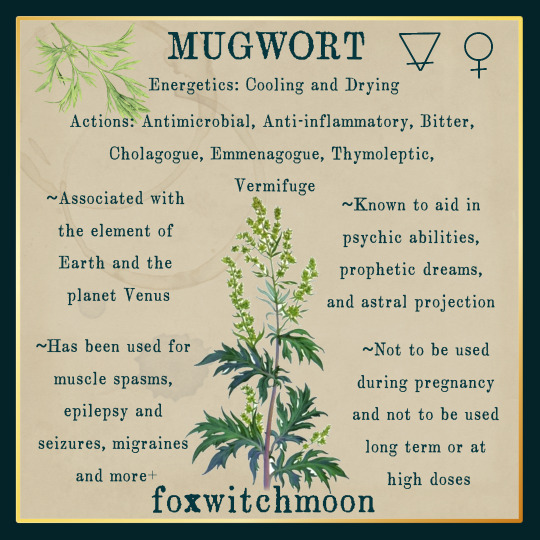
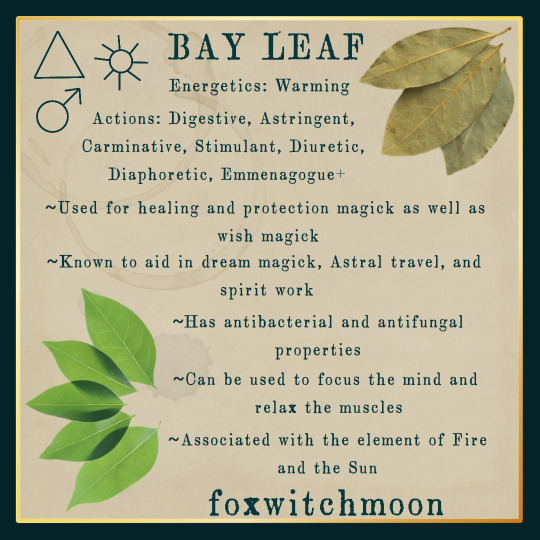
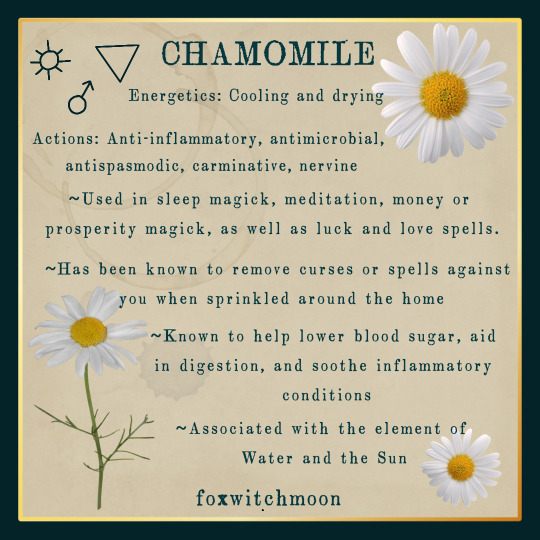
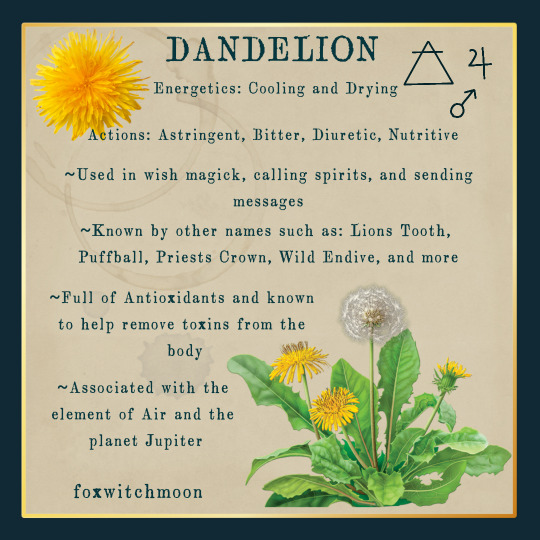
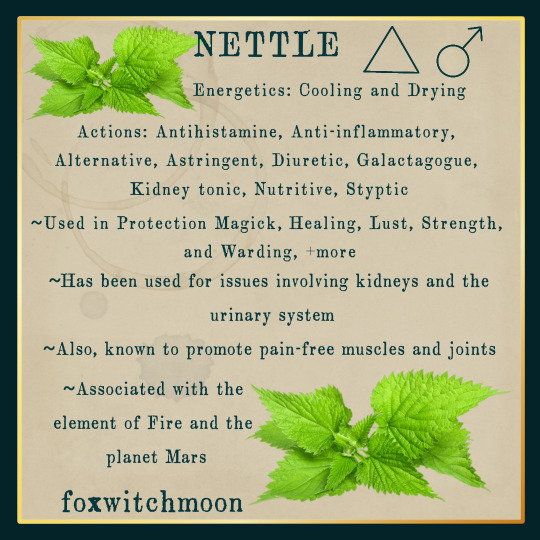
Herbology × Magick🍃
Follow @foxwitchmoon on IG for more🌿🔮🌙🧿🕯🪻🗝✨️
#witchblr#grimoire#witch#witchcraft#witches#occult#plants and herbs#foraging#chakras#herbology#herbalwitch#herbal medicine#herbalism#green witch#eclectic witch#lunar witch#moon magic#rosemary#nettle#dandelion#mugwort#bay leaf#chamomile
736 notes
·
View notes
Text
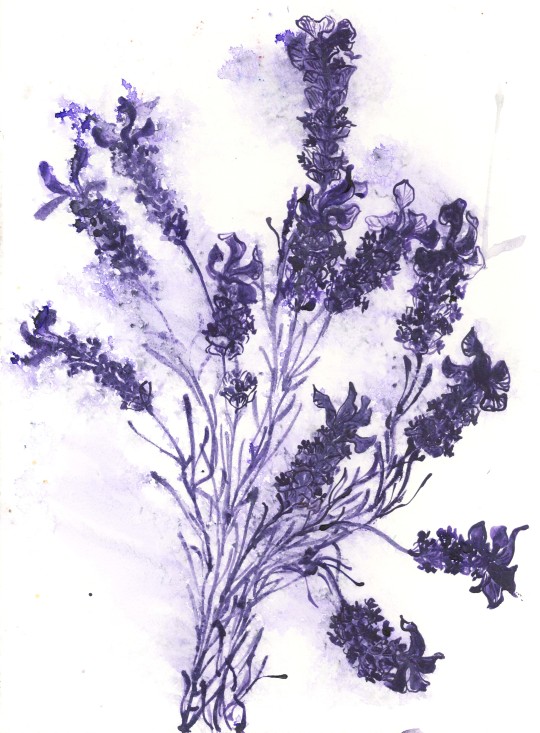
Enduring
Watercolor On Artboard
2023, 12"x 16"
Lavender
Amethyst
Private Collection
#artists on tumblr#flowers#floral#art#watercolor#painting#minimalism#nature#artwork#plants#lavender#amethyst#botany#plant#herbs#plants and herbs#cottagecore#cottage aesthetic#botanical#botanical art
437 notes
·
View notes
Text



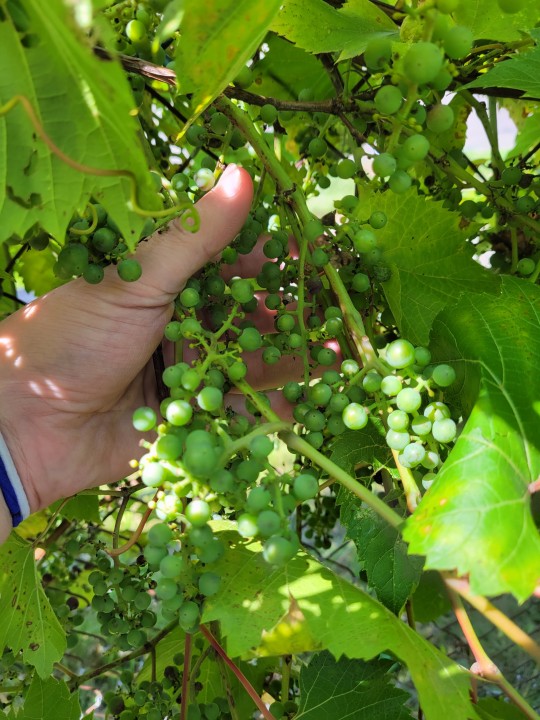
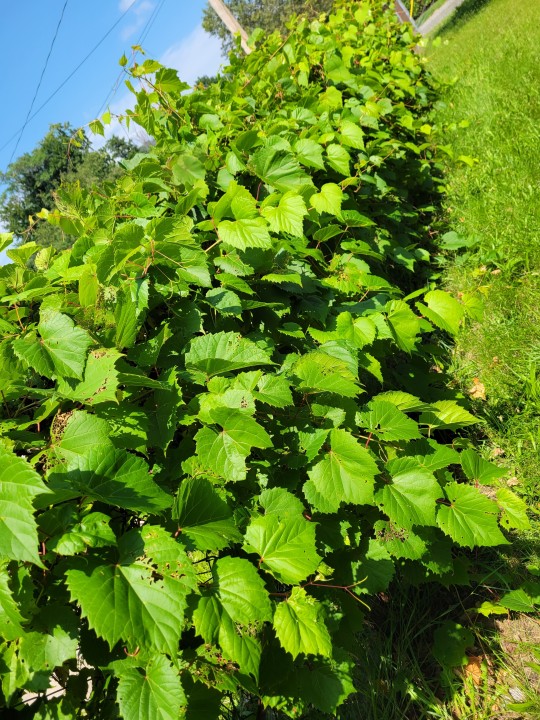
I'm taking a break after tending to my grapes! Yes, I grow grapes and plenty of other berries. As well as corn, pumpkins, potatoes, tomatoes, and plenty others! I love plants! I'm sure my neighbors hate me, tho. My yard looks like a forest 🤣🤣
#wine making#make your own#plants#plants and herbs#plant girl#transgender#trans#trans pride#transisbeautiful#mtf#transgirl#mtf hrt#girlslikeus#maletofemale#transformation#transition#actually trans#m2f transgender#mtf trans#this is what trans looks like#trans community#trans fem#trans feminine#trans girl#trans goddess#trans is beautiful#love is love#trans is sexy#trans model#trans positivity
449 notes
·
View notes
Text
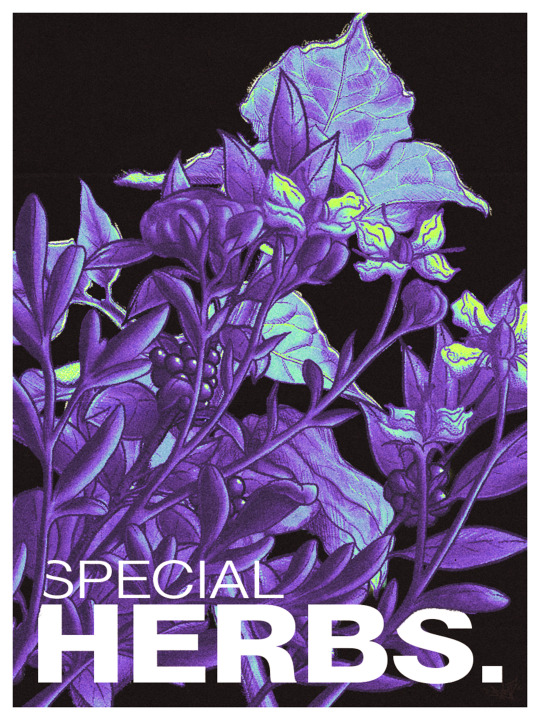

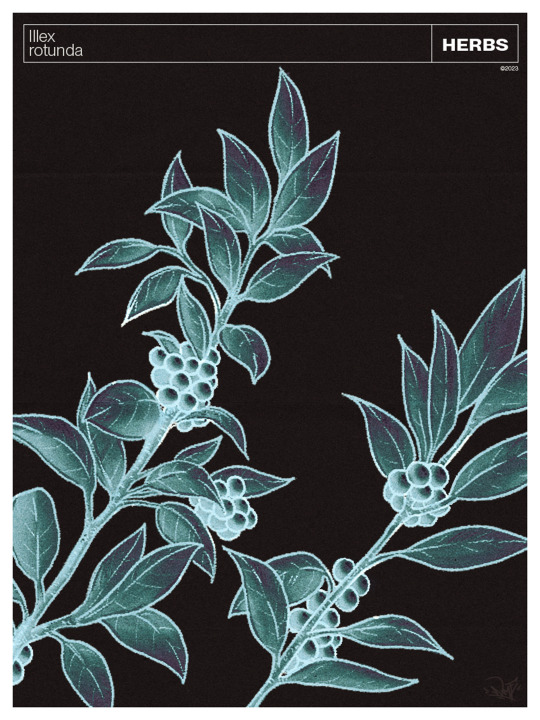
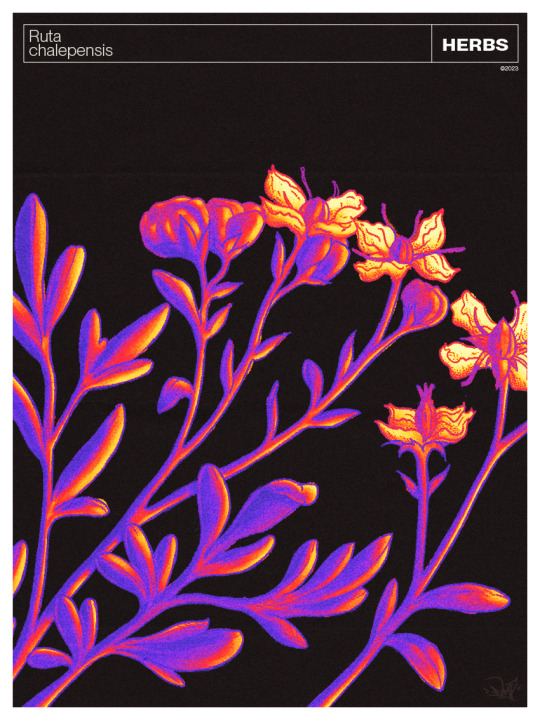
Special herbs color explorations.
#illustracion#illustration#art#digital art#digital illustration#artists on tumblr#plants#heat#flowers#art print#nature#uchuva#holly#ruda#scientific illustration#herbs#plants and herbs#medicinal herbs
189 notes
·
View notes